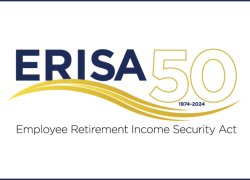 Transitioning from your work life into retirement takes planning to make sure you have enough savings to cover a hopefully long retirement. For a financially secure retirement, it’s important to make the most of your job-based retirement plan and make informed decisions about Social Security and Medicare. Considering these issues may seem overwhelming. Our Employee Benefits Security Administration has resources to help you plan for retirement with information and tools to prepare to make timely decisions and determine if you are on track for a financially secure retirement.
Transitioning from your work life into retirement takes planning to make sure you have enough savings to cover a hopefully long retirement. For a financially secure retirement, it’s important to make the most of your job-based retirement plan and make informed decisions about Social Security and Medicare. Considering these issues may seem overwhelming. Our Employee Benefits Security Administration has resources to help you plan for retirement with information and tools to prepare to make timely decisions and determine if you are on track for a financially secure retirement.
If you’re about 10-15 years from the date you want to retire, our publication “Taking the Mystery out of Retirement Planning” can help you plan for a more financially secure future. It includes worksheets that provide a simple approach to figure out approximately how much you need to save so you’ll have enough when you retire. The interactive worksheets also help you track your progress in saving. The worksheets are a helpful starting point as you take the mystery out of your retirement planning.
Choosing when to retire is an important decision and involves a number of issues you may want to consider in your retirement planning. The more you know before you start making decisions, the better off you will be in retirement. Another resource, the Retirement Toolkit, is brought to you by the three federal agencies involved in key elements of your retirement security: your job-based retirement plan, Social Security benefits and Medicare. The toolkit includes resources from the three agencies to help in your planning and gives instructions on how to contact us with your specific questions.
The timeline below can help you plan for the retirement you want:
Age 50: Begin making catch-up contributions – an extra amount that those over age 50 can add to 401(k) and other retirement accounts. Check your Social Security Statement online every year for earnings accuracy and to learn what your estimated benefits will be.
Age 59 ½: No more tax penalties on early withdrawals from employer-provided retirement savings plans such as 401(k) plans and other individual retirement accounts, but leaving money in means more time for it to grow. Also, withdrawals will be taxed as regular income.
Age 62: Earliest age to collect Social Security retirement benefits; however, claiming before the full retirement age results in reduced monthly benefits.
Age 65: Sign up for Medicare and Medicare Part D.
Age 66-67: Start receiving Social Security full benefits, depending on your birth year.
Age 67-70: Earn Social Security Delayed Retirement Credits which increase monthly benefits for each month claiming is delayed between the full retirement age and age 70.
Age 73: Start taking minimum withdrawals from most retirement accounts by this age; otherwise, you may be charged heavy penalties in the future.
In addition, under our recently issued Retirement Security Rule, if you seek help from a financial professional in getting recommendations how to invest and manage your retirement savings, you can now rest easy knowing that, under this new rule, that financial professional is required to act in your best interests and provide you with sound advice, not mislead you and not overcharge. It’s one more way that the Biden Administration, the Department of Labor, and the Employee Benefits Security Administration is working to protect workers and their families in every chapter of work life, including into and through retirement.
We recognize the enormous contributions that retiring workers have made to this country. We are committed to ensuring that every American can transition from years of hard work into the next chapter of retirement with the dignity and financial security they deserve, and the retirement savings they’ve earned along the way. This Older Americans Month take time and plan so you can enjoy a financially secure retirement. Start now and be well-informed so you can make timely decisions and, if necessary, make changes while you have time before retirement. You will enjoy the benefits of this planning later.
Lisa M. Gomez is the Assistant Secretary of the Employee Benefits Security Administration.

 U.S. Department of Labor Blog
U.S. Department of Labor Blog

